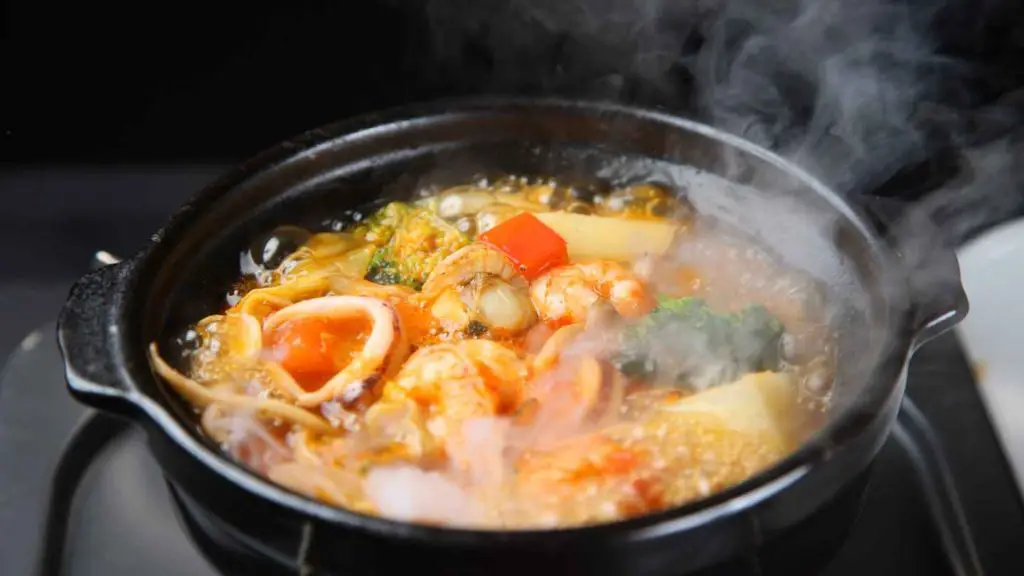One important thing that is often overlooked by home cooks is the proper cooling of hot food before it is placed in the refrigerator. It is critical to understand that hot or warm food placed inside a refrigerator might not only increase the refrigerator’s temperature but also spoil the food within. Therefore, it is essential to ensure that you cool the hot food to room temperature before storing or refrigerating it.
So let’s explore the reasons why it is important to cool temperatures before refrigerating food and how long you should let it cool. We’ll also provide you with some expert tips and tricks to make the process of cooling hot food more efficient and effective.
Short Quiz
Why It’s Important to Cool Food Before Refrigerating

Cooling your hot food before refrigerating prevents bacterial contamination of food items that can spoil or lead to serious health problems. The refrigerator’s temperature settings are set to maintain safe temperatures for preserving food. Still, the introduction of warm or hot food can cause the internal temperature of the refrigerator to rise, making the appliance work harder to maintain the ideal temperature for food preservation. When a refrigerator works harder than normal, it can cause it to break down or consume more energy, leading to skyrocketing utility bills.
Additionally, warm food within the refrigerator promotes the growth of bacteria, producing food spoilage and health risks to you and your loved ones.
How Long Should You Let Hot Food Cool Before Refrigerating?
Research from the University of Minnesota recommends cooling hot food to a temperature of 70°F (21°C) within 2 hours after cooking it. Once 2 hours have passed, the remaining food must be cleaned and put away for food safety.
Within the next 4 hours, that left food item must be cooled down to a temperature of below 40°F (4°C) to limit bacterial growth. Failing to let hot foods cool down at room temperature for even a short time can create health risks and compromise the food’s quality, not to mention an overloaded refrigerator that will increase energy consumption and cost money.
It is crucial to avoid partially cooked or reheated food eaten soon after, as it only increases the risk of unhealthy bacteria. Though there is no general thumb rule for how long to let food cool before refrigerating, it is indeed recommended to cool hot food to room temperature within 30 minutes – 2 hours of cooking it.
Different Ways to Rapidly Cool Hot Food

Below are some of the best ways to ensure that hot, cooked food cools down quickly and efficiently before storage in the refrigerator.
1. Ice Bath
Placing a hot pan or dish in an ice bath surrounding the edge of the food container will rapidly cool the food, ensuring that it reaches the maximum drop in temperature of 60 degrees Celsius. You may also choose to add water and ice to the container. An important addition to this is covering the subject with a cling film or aluminum foil to remove air circulation.
2. With Ice Packs
Gravy, soup, or stew can be cooled down most efficiently by removing the contents from the cooking pan and eliminating the unwanted extract by pouring it into a container with an ice pack. The ice pack will help to chill the contents most efficiently.
This process promotes cooling and is more thoroughly distributed faster within the food items, avoiding potential bacteria growth and contaminants.
3. Using Metal Containers
Transferring hot or warm food to metal containers with the lids off can bring down the temperature faster than a glass container and protect the food surface areas from bacterial and animal contaminants. Additionally, metal conducts heat fast and disperses heat, allowing the dish’s internal temperature to drop in a more efficient way.
4. Spreading + Stirring
Pour the substance into a baking tray/sheet or a shallow dish, and quickly spread it out with a spoon or spatula. The wider the container, the better in delivering the fast loop of the cooling process. Only spread out a shallow surface area to allow a more thorough cooling process.
5. With a Fan or Outside
Taking on the cooling process in an environment outside or under a considerable fan ensures the efficiency of the cooling process. Fans lead to quicker cooling, and the application of colder air supplies cooling to the bottom of the dish and progresses circulation.
6. Separating Portions
When cooling down sizeable food items, it’s beneficial to set them aside into separate containers, providing an extent of quicker, efficient cooling within the food items.
Can You Put Warm Food in the Freezer?
The answer here is both yes and no. It is not safe to put extremely hot food in your freezer as it increases the internal temperature, leading to the growth of microorganisms, and promoting thawing under particular scenarios. Additionally, it can increase room temperature close to the freezer.
On the other hand, it’s okay to freeze warm, cooked food. However, you must always let the food cool down entirely to room temperature before placing it in the freezer.
Related: Does Hummus Need Refrigeration?
Conclusion
Storing hot or warm food in your refrigerator could cause severe repercussions for you and any other person that eats your food. To preserve the quality and taste of the food, along with the necessary storage and care tips, the cooling process must be prompt and accurate.
When it comes to cooling hot food before refrigerating, following the time-tested advice of the FDA and USDA, and taking advantage of the rapid cooling techniques listed in this article can make a significant positive impact on your food quality, energy usage, and overall safety.






